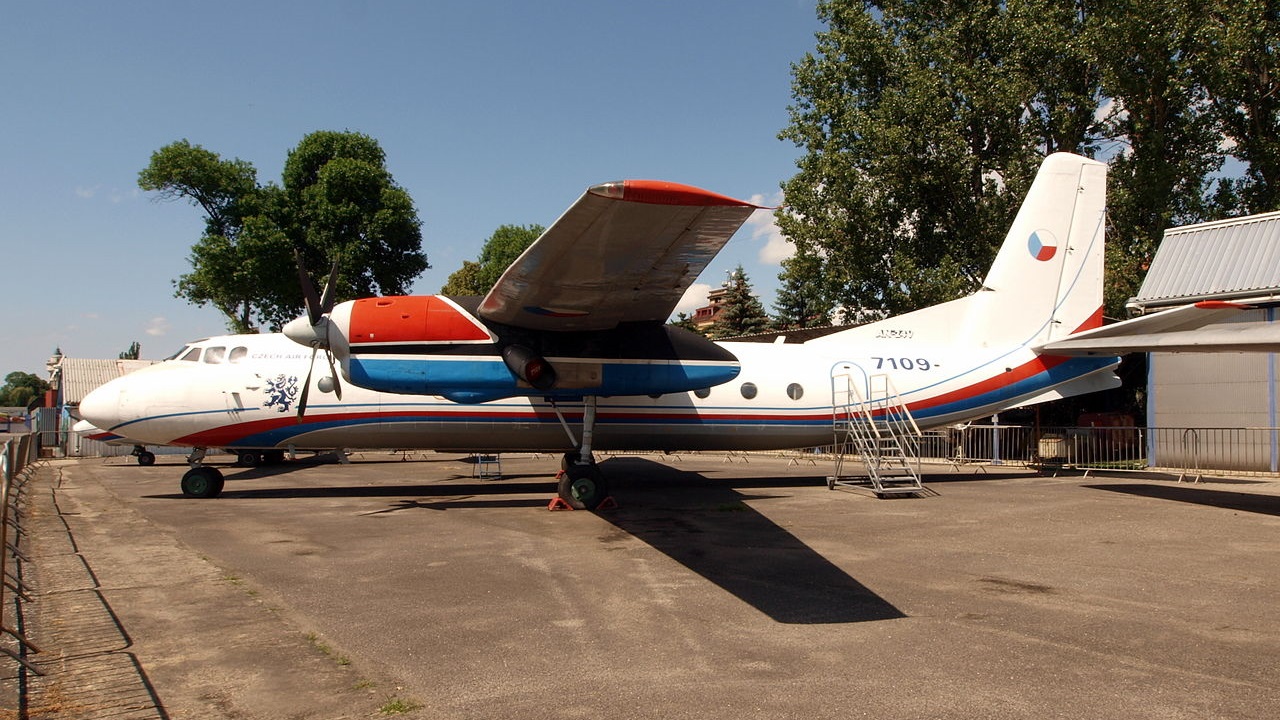
Were International Sanctions to Blame for Russia’s Recent Plane Crash?
Many of the An-24s in Russia’s civilian fleet are not operating at full capacity, as Western sanctions have made it increasingly difficult for the Kremlin to source spare parts.
A Soviet-era Antonov An-24 turboprop commercial aircraft, operated by Angara Airlines, crashed south of Tynda, about 7,000 miles east of Moscow. All 50 passengers on board were killed. While the cause of the crash was not immediately clear, poor visibility and adverse weather conditions were likely contributing factors.
The An-24 involved in the crash was about 50 years old. This model of aircraft has more than 160 recorded incidents, including at least 60 serious crashes since 2000, many involving fatalities—raising questions about the wisdom of continuing to use the Cold War relic.
What Caused the Aircraft to Crash?
The An-24, operated by the privately owned Siberian regional airline Angara, was en route from Blagovechensk (near the Chinese border) to Tynda, which serves as an important railway junction for the Amur region. After “going around” on the first landing attempt, the aircraft disappeared from radar, prompting search efforts.
“The burning fuselage of the plane, which was made in 1976, was spotted by a search helicopter after it disappeared from radar screens,” Reuters reported. “It had been attempting to land for a second time after failing to touch down on its first approach.”
Inspectors have launched a criminal investigation into a potential violation of air traffic and air transport regulations. The aircraft had recently passed a technical safety inspection, despite having been involved in four minor incidents since 2018, including one in which the aircraft nearly lost a wing during a lightning strike.
Sanctions May Have Contributed to the Crash
The An-24 is no stranger to mishaps. Designed for short- to medium-range flights, the An-24 is a twin-turboprop aircraft that made its first flight in 1959 and remains in use today for regional routes and operations on rough fields. Operated primarily in Russia, Central Asia, and parts of Africa—often in remote regions with limited infrastructure—the An-24 has earned a reputation as a workhorse. However, the aircraft has also earned a reputation for being accident-prone, with 160 incidents since the type’s introduction. These incidents have increased in frequency, partly due to Western sanctions and the limitations on access to spare parts, as well as continued operations in remote regions.
Today, many An-24s still in service are 40 to 60 years old, making them especially vulnerable to metal fatigue, outdated avionics, and systems failures. When the vulnerabilities of the aged aircraft are combined with the operational conditions—the An-24 is frequently used in harsh climates and remote airfields, such as Siberia or Far Eastern Russia, with poor weather and limited radar coverage—a recipe for frequent disaster is created.
While the An-24 is admirably rugged, its design lacks modern safety systems, such as enhanced ground proximity warning or fly-by-wire technology. However, many of the An-24s in Russia’s civilian fleet are not operating at full capacity, as Western sanctions have made it increasingly difficult for the Kremlin to source spare parts.
Examples of recent major crashes are plentiful. In 2011, a RusAir plane crashed while trying to land in poor visibility in Petrozavodsk, leading to the death of 47 passengers. In 2019, an An-24 in Angola crashed during takeoff due to engine failure.
Most experts agree that the An-24 is overdue for retirement and has no business shuttling passengers in remote locations.
About the Author: Harrison Kass
Harrison Kass is a Senior Defense and National Security Writer at The National Interest. Kass is an attorney and former political candidate who joined the US Air Force as a pilot trainee before being medically discharged. He focuses on military strategy, aerospace, and global security affairs. He holds a JD from the University of Oregon and a master’s in Global Journalism and International Relations from NYU.
Image: Wikimedia Commons.
The post Were International Sanctions to Blame for Russia’s Recent Plane Crash? appeared first on The National Interest.


















